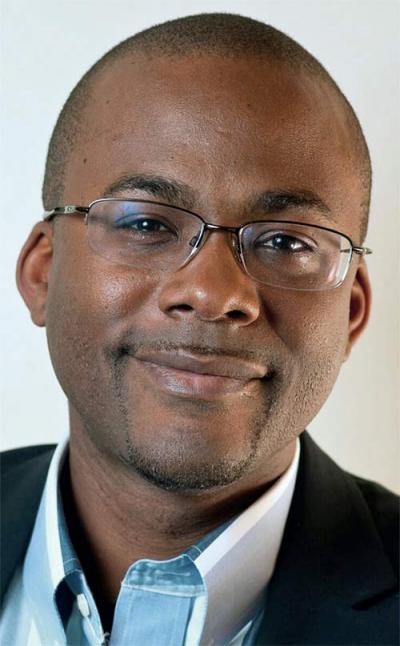

|
||
|
||
The Caribbean suffered six major storms in 2017, including the record-breaking Category 5 hurricanes Irma and Maria. In the unprecedented destruction, the islands of Dominica and Barbuda lost all communication and telecommunications service, and eight other Caribbean countries were severely disrupted.
Each hurricane season wreaks greater devastation than the last, yet decreased telecommunications competition, inadequate regulation, and high national debt burdens in the region yield ever-diminishing infrastructural investment. In effect, the Caribbean enters each hurricane season with more fragile communications infrastructure than the year before. Consequently, the region’s capacity to rebound diminishes each year. Drawing from the devastation and experience of the last hurricane season, the region is now taking steps to ensure that its networks are more robust and more resilient.
The New Normal?
The increasing frequency and intensity of storms in the Caribbean are concerning to both its residents, who have to find ways of surviving, as well as those tasked with maintaining life-supporting infrastructure in the region. The escalating devastation is also profoundly challenging given the historic constraints of economy, infrastructure and human capacity that define the Caribbean’s small states.
Hurricane Maria destroyed every building in Barbuda, and all of its infrastructure, requiring that the entirety of the country’s population be evacuated to other islands. In Dominica, 29 lives were lost, more than 30 persons are still missing, and the country’s agriculture reserves were entirely lost. Barbuda, Dominica, Puerto Rico, the British Virgin Islands and Anguilla sustained severe disruptions in communications networks and entire communities were completely disconnected from the Internet, severely hampering recovery and humanitarian relief efforts. The damage and losses in Dominica alone totaled at least 1.3 billion US dollars, more than double the nation’s GDP.
While unprecedented, the 2017 hurricane season was not unanticipated, and it is part of a larger system of related problems. For the Caribbean, the challenge is not only climate-change fueled hurricanes, but includes rising sea levels, coral bleaching, drought, and other consequences of the earth’s changing climate patterns.
Opportunity in the Storm
The Director General of the Organization of Eastern Caribbean, (OECS) Dr. Didacus Jules, recently stated,
“The existential challenge of smallness is the contradiction of opportunity coexisting with vulnerability. On the one hand, smallness provides the scale ideal for field-testing innovation and integrated ecological solutions to the dilemmas of human civilization… On the other hand, at the core of smallness is vulnerability. The vulnerability of small states is inversely proportional to size because the mathematics of disaster does not move the human conscience as it does on a larger stage.”
The small size of markets and populations in the region make the Caribbean particularly vulnerable to exogenous shocks. However, small size also makes it possible to experiment with and implement solutions that can benefit entire national communities. It allows for national models to be tested before being applied on a regional or even a global scale. This is the opportunity before the Caribbean.
Focus on Network Resilience
The failure of Caribbean communications networks was a particularly worrying consequence of the recent storms. It highlighted the urgent need to strengthen the region’s communications infrastructure. Critical telecommunications services, including mobile networks and Internet connectivity, were severely disrupted. Relief efforts were hampered not only by disabled networks, but also by limited technical personnel, and the absence of regulations and plans to allow for emergency spectrum and infrastructure sharing.
Thankfully, regional organizations like the Caribbean Telecommunications Union (CTU) and the volunteer-based, non-profit Caribbean Network Operators Group (CaribNOG), are focusing special attention on strengthening Caribbean network resilience. They have found solid support from Internet organizations such as Packet Clearing House (PCH) and the American Registry for Internet Numbers (ARIN), each with a strong interest and history in supporting critical Internet Infrastructure in the region.
The CTU has empaneled a special Commission for Caribbean Communications Resilience to critically examine the region’s communications vulnerabilities and make recommendations for more resilient infrastructure, technologies, and practices. There is strong support for the Commission from industry, including IBM, Cisco, and Intel, as well as intergovernmental organizations like the World Bank and Organization of American States as it works to develop actionable recommendations for regional governments, regulators and communications ministries. It is hoped that these recommendations, expected before the start of the 2018 hurricane season, will help strengthen local and regional network infrastructure and spur the creation of more autonomous networks in the region.
CaribNOG is overseeing the development of special software applications to address specific disaster preparedness and response gaps that were exposed. It is also designing technical workshops targeting network operators and computer engineers to help with the proliferation of autonomous networks and strengthening of critical Internet infrastructure in the Caribbean. The CTU and CaribNOG are also collaborating on capacity building efforts aimed at regulators and policymakers.
The scale of the devastation wrought by this season’s hurricanes is unprecedented in recent Caribbean communications history. Now, there is unprecedented commitment to work collaboratively to strengthen network resilience in the region. There is also new resolve to ensure that the Caribbean is better prepared for whatever the future brings.
Sponsored byVerisign

Sponsored byIPv4.Global

Sponsored byWhoisXML API

Sponsored byVerisign

Sponsored byDNIB.com

Sponsored byCSC

Sponsored byRadix
